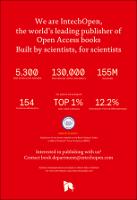Chapter Structural Insight into Regulation of the Proteasome Ub-Receptor Rpn10
| dc.contributor.author | Kleifeld, Oded | |
| dc.contributor.author | Levin-Kravets, Olga | |
| dc.contributor.author | Prag, Gali | |
| dc.contributor.author | Ben-Aroya, Shay | |
| dc.contributor.author | Attali, Ilan | |
| dc.contributor.author | Keren-Kaplan, Tal | |
| dc.date.accessioned | 2021-06-02T10:12:24Z | |
| dc.date.available | 2021-06-02T10:12:24Z | |
| dc.date.issued | 2019 | |
| dc.identifier | ONIX_20210602_10.5772/intechopen.85283_448 | |
| dc.identifier.uri | https://library.oapen.org/handle/20.500.12657/49334 | |
| dc.description.abstract | Ubiquitylation is a posttranslational modification that determines protein fate. The ubiquitin code is written by enzymatic cascades of E1 and E2 and E3 enzymes. Ubiquitylation can be edited or erased by deubiquitylating enzymes. Ub-receptors are proteins that read and decipher the ubiquitin codes into cellular response. They harbor a ubiquitin-binding domain and a response element. Interestingly, Ub-receptors are also regulated by ubiquitylation and deubiquitylation. However, until recently, the molecular details and the significance of this regulation remained enigmatic. Rpn10 is a Ub-receptor that shuttles ubiquitylated targets to the proteasome for degradation. Here we review recent data on Rpn10, with emphasis on its regulation by ubiquitylation. | |
| dc.language | English | |
| dc.subject.classification | thema EDItEUR::P Mathematics and Science::PS Biology, life sciences::PSB Biochemistry | en_US |
| dc.subject.other | ubiquitin receptor, crystal structure, ubiquitylated ubiquitin receptor, regulation mechanisms, cargo shuttle | |
| dc.title | Chapter Structural Insight into Regulation of the Proteasome Ub-Receptor Rpn10 | |
| dc.type | chapter | |
| oapen.identifier.doi | 10.5772/intechopen.85283 | |
| oapen.relation.isPublishedBy | 09f6769d-48ed-467d-b150-4cf2680656a1 | |
| oapen.relation.isFundedBy | FP7-PEOPLE-IRG-2008 | |
| oapen.grant.number | 231079 | |
| oapen.grant.acronym | AUTO-UBIQUITYLATION |

